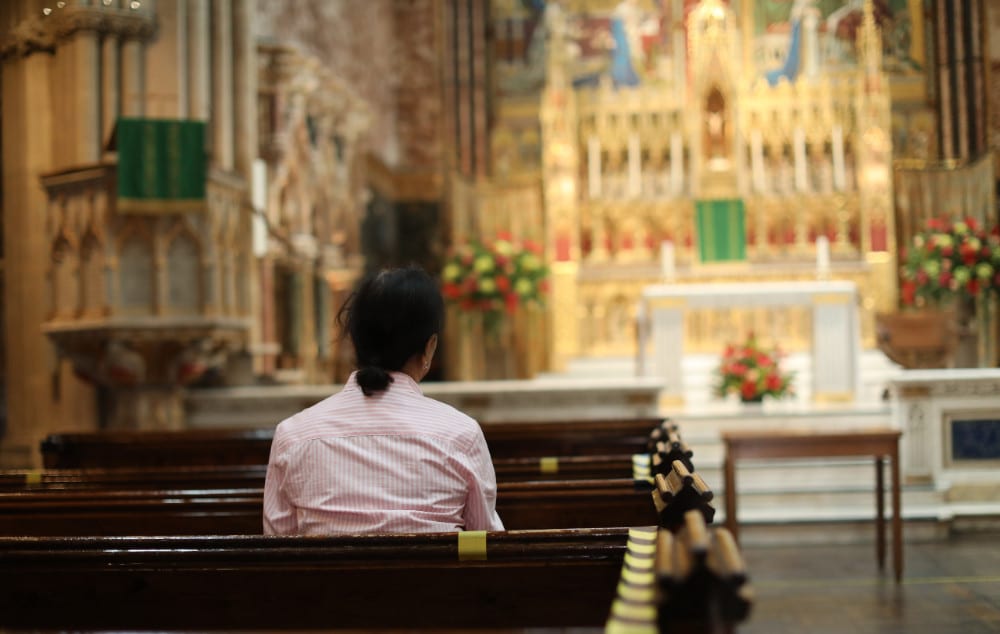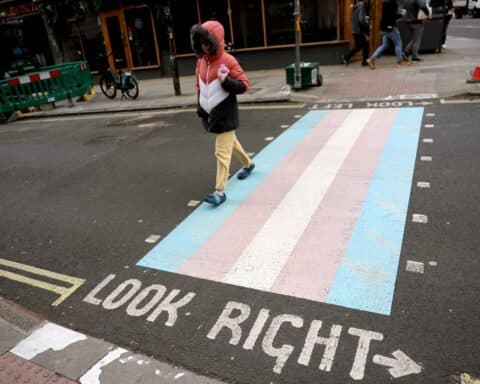Her ideal parish church seems to be one that still includes “a worshipping space,” but also includes — inside the nave — a branch of the post office, a café, another shop and a large children’s play area of brightly colored tubes and platforms that looks to be about 12-feet high and 20-feet long. Judging from the picture of St. James Church in the West Hampstead area of London, the worship area is very small.
Writing in the English magazine Prospect, Jane Shaw, a former cathedral dean now head of an Oxford college, notes that the Church of England shrinks by the day. “According to recent surveys,” she writes, “if the decrease in attendance continues at the present rate, the Church will be largely dead by 2033.” But it has lots of money and lots of churches, most barely used or not used at all. Just a quarter of the people in England believe in God or a higher power. A third either believe in a higher spiritual power that isn’t God or don’t know what they believe.
Shaw has an idea what to do about this. Which is basically to make the Church of England a social institution with a spiritual side, which she calls “the more open model of church.” She invokes the atheist Bertrand Russell’s claim that even when people reject traditional religion, they still look for the “quality of infinity” that offers “an insight deeper than the piecemeal knowledge of our daily life.”
The Church of England “has been able to serve such seekers, and those on the edges of organized religion, locally through the parish — through the provision of baptisms, weddings and funerals; compassion and pastoral care in times of crisis; distinctive contributions to a community’s well-being; civic rituals that cement the bond between individual and society; and the beauty and peace of the parish church itself.”
“The C of E was designed to be for everyone,” she writes, referring to its founding at the Reformation. She contrasts that with the “private club model,” pushed by the Evangelical party, which holds that “to be a proper Christian you had to believe a specific set of doctrines about salvation.”
The problem is that the men who founded that church “for everyone” broke with the Catholic Church because they believed that to be a proper Christian you had to believe specific doctrines. The doctrines, as it happens, that the Evangelicals insist upon. The English reformers’ idea of a church for everyone was not Shaw’s inclusive one. It was one in which everyone had to agree with them, or at least pretend they did.
Because they believed that Christianity offered more than a vaporous “quality of infinity.” It offered the Word of God. The English example suggests that belief draws people. The Evangelical churches are the only churches in England growing as churches.
Yet even that’s complicated. In studying why people leave the Church in his book “Mass Exodus,” the English sociologist Stephen Bullivant has shown the complicated, and only partly religious, reasons Catholics leave, and therefore the complicated, and only partly religious, reasons people stay. (This is also helpful: Better to bet hated for the right reasons than ignored.) As I argued some years ago against a proposal similar to Shaw’s, the mainline churches that grew almost always enjoyed advantages separate from religion, including being less religious.
Which is unexpectedly good news for the Catholic Church. Even if Shaw were right, the Church can’t do what she suggests, even if turning every parish into a St. James, West Hampstead, would reverse the shrinking numbers.
The Church believes herself the bearer of a revelation. A revelation whose extensive details matter. To accept the Church’s teaching or to reject it means choosing one of two different ways of living. In this sense, she’s an example of the private club model.
We could call Shaw’s “church for everyone” the public house (or pub) model. You can always walk in the door, get the drink you want, get a meal if you want, talk with your friends, or watch the television, or look at your phone, whatever you want to do. You don’t have to agree to anything beyond the normal rules of human society to enjoy the place. You can become a regular or leave and never come back. Up to you.
That has its attractions. The pub model offers religion without religion. It makes no demands, and, thus, keeps people closer to the church than they would otherwise be. And in practice, the Catholic Church lives to a great extent by this model. We don’t check membership at the door before Mass.
But the Church will still always live in the world as the kind of body Shaw dismisses as “a private club.” The Church can only do what she does. She can only do what she is. That is, the Body of Christ and the universal sacrament of salvation. A private club, in a sense, but a club into which everyone is invited.
David Mills writes from Pennsylvania.





